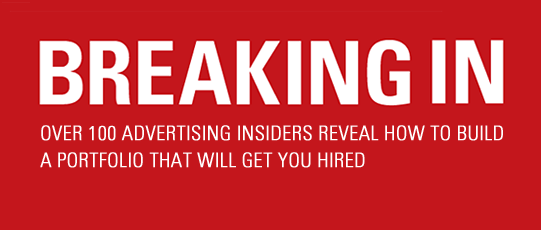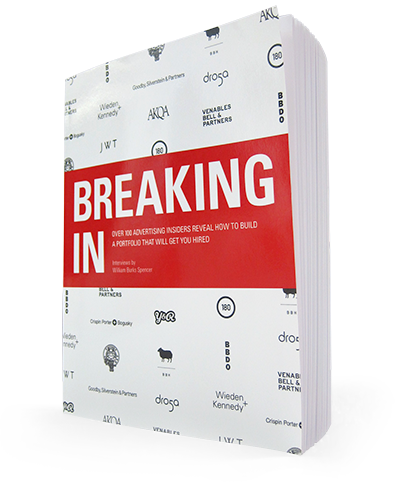Check out some great work from Bob Barrie.
WS: What do you look for in a student book? And what impresses you?
BB: I look for work that would survive in the “real world.” This doesn’t mean that it can’t be smart, edgy, beautiful, provocative, and fresh. This just means it has to be viable, and not designed just for the pages of Archive Magazine.
Too much of student work is simply not very clear. It feels more like a MENSA test than a piece of marketing communication. And I don’t know too many consumers today who have the time, patience, or attention span to work this hard. Do a test. Show the work in your book to your roommate. Your boyfriend. Your girlfriend. Your mother. Your uncle. Your dentist. Anyone but your fellow advertising students. They’re your audience. They don’t have to like it, but they do need to “get” it. If they don’t, you perhaps have some revising and simplifying to do.
That said, your book’s main goal should be a collection of brilliant, likable, differentiating ideas that are spread across a broad range of media. But then, you already knew that.
WS: How important is finish? If ideas are the most important thing, can sketches be enough? Do you look at physical books anymore, or is it all websites?
BB: Finish is important to me. A big part of being a great creative is “resourcefulness.” If you’re a brilliant thinker who happens to be crappy at executing and polishing ideas, find someone to do it for you. Maybe it’s that great art direction or graphic design student you know. Make a deal with them and they can also put your new beautifully designed idea in their book as an example of their expertise. A great idea can really come alive with some lovely design behind it holding it. Or it can sit somewhat hidden in scribbles.
I enjoy looking at both physical books and websites. Websites are more convenient, but a book often enjoys the benefit of lying around the office for a while as a reminder of your genius.
[ … ]
In putting your book together, remember that no medium is insignificant. If you’re working on an airline, for example, realize that far more customers see a ticket jacket than see a TV commercial.


Comments are closed.